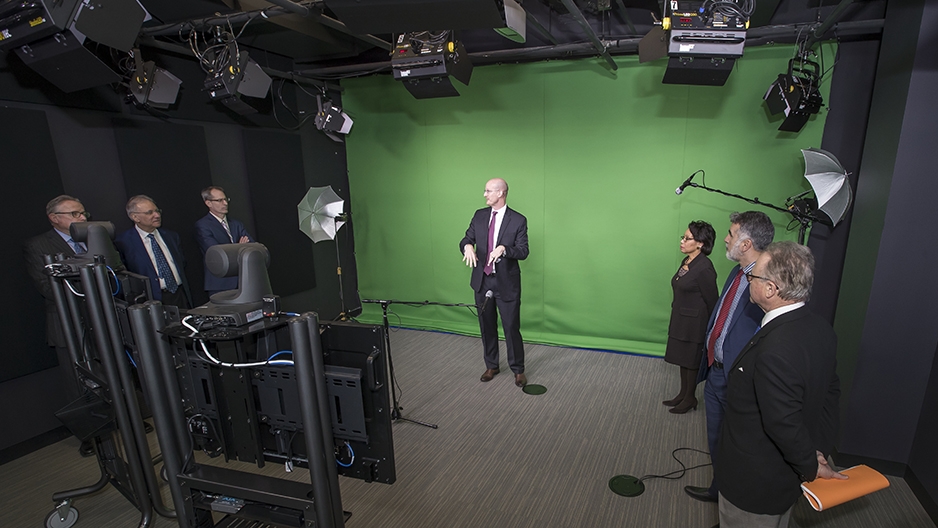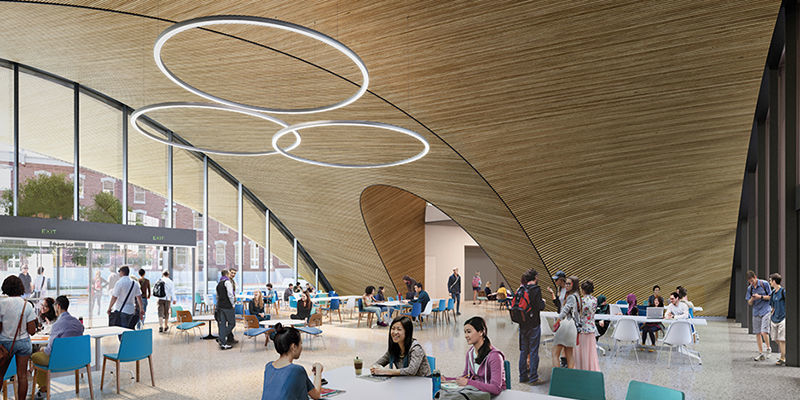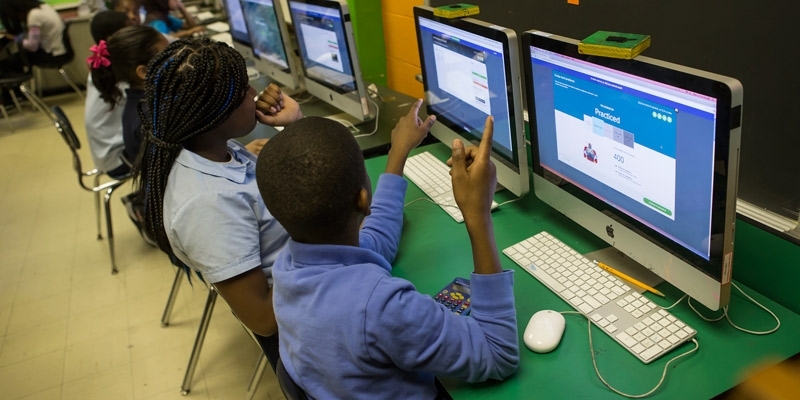Faculty can use new studios to create dynamic videos for class
The Office of Digital Education’s digital production studios feature a green screen, a ceiling cam and many other resources.

A green screen. A ceiling cam. A teleprompter.
These are just some of the tools Temple University faculty can now use in the Office of Digital Education’s new studios to liven up their lessons and create online course material.
Provost JoAnne A. Epps, several school and college deans and other academic staff cut the ribbon on the studios last week. The new facility, located on the fourth floor of the Bell Building, gives professors a space to record lectures, interviews, panel discussions, demonstrations and more. They can also enrich their videos with graphics and other visual touches.
“We’ve created an office that allows all university faculty to access technology and instructional design services that will add high quality and high polish to online courses,” said Daniel L. White, director of digital education. “This will also positively impact people in non-credit units and other administrative units who want to create something for the web.”
“A full-service kind of place”
One of the main attractions of the new facility is a roughly 1,100-square-foot multimedia studio that features a green-screen backdrop. The space also boasts low-heat LED lights and multiple cameras to capture different angles and help with on-screen positioning and teleprompting.
There’s also an overhead cam that can zoom in on documents or objects. The space is big enough for several people to appear on screen at the same time.
On the other side of the studio is a control booth.
Use of the studio costs $56 per hour, but White said faculty can also take advantage of several amenities for free, including two “faculty pods” where they can shoot and edit their own footage. (White’s specialists will help with post-production for a fee.)
“It’s really a full-service kind of place,” said Elizabeth S. Bolman, professor and chair of art history, whose program is working with the Office of Digital Education to design instruction and multimedia for several courses.
“We’re interested in expanding our course offerings to accommodate students who have difficult schedules and to reach people who aren’t in the Philly area,” Bolman said. “We’re very much committed to making sure the online experience is at least as good as our tremendous high-quality classroom experiences are.”
Filming for the future
White, who began his career in academia as a professor of educational leadership, became director of the Office of Digital Education in 2014. Over time, he expects to add more resources to the new space, including music recording and possibly live streaming.
White encourages faculty to work with his staff on designing curricula that utilize all the studios have to offer.
Bolman plans to co-teach a course titled From the Book of the Dead to the Graphic Novel. She said she will use the studio space to create videos of historic manuscripts and special collection items for that course.
Temple professors like her “are the repositories of generations and generations of knowledge,” Bolman said.
“If we don’t enter the digital realm that younger generations live in, this tremendous chain of knowledge will break.”


